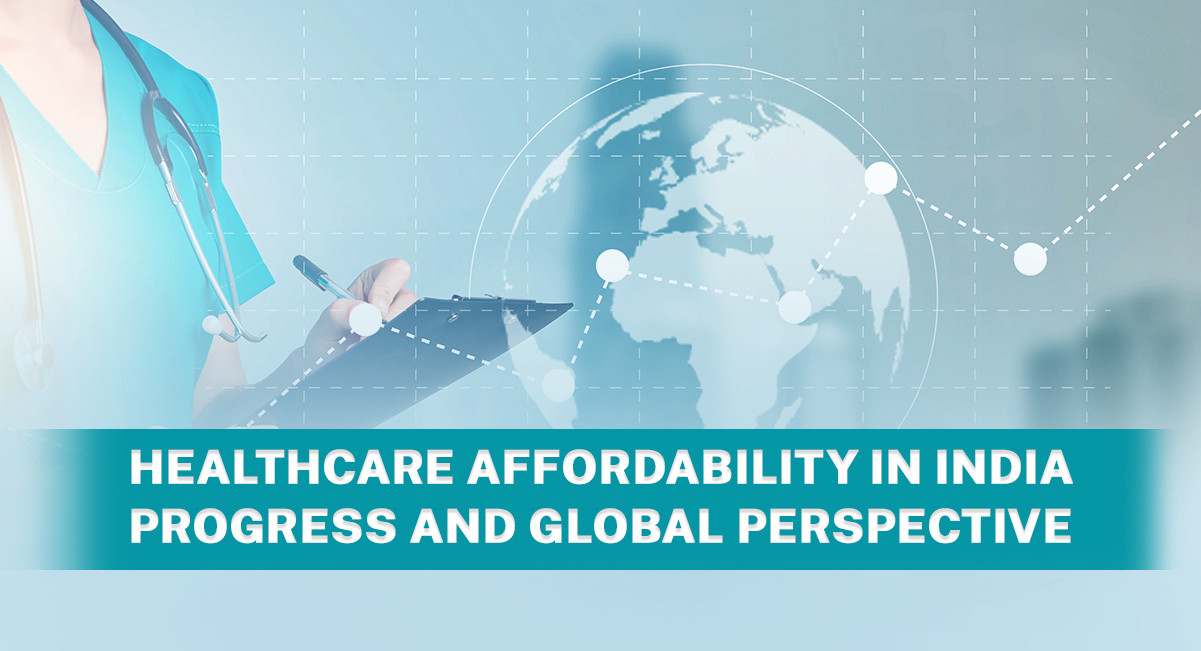


Healthcare affordability remains a critical concern for many nations, including India. Over the years, India has made significant strides in improving healthcare access and reducing financial barriers to care. However, challenges persist, particularly in rural areas and among economically disadvantaged populations.
Affordability Trends in India
India’s healthcare expenditure has shown a steady rise over the years, reflecting the nation’s growing commitment to expanding healthcare access. As of FY 2024–25, public health expenditure stood at about 1.9% of GDP, an improvement over previous years but still short of the 2.5% target set under the National Health Policy 2017 for 2025.
Rising Health Expenditure
India's total health expenditure has been on an upward trajectory, with the Total Health Expenditure (THE) reaching around 3.8% of GDP for FY 2024-25, signalling an upward trend in overall investment in the sector. This indicates a concerted effort to enhance healthcare infrastructure and services and is a positive sign of the government's commitment to improving healthcare access and quality across the country.
Persistent Out-of-Pocket Expenditure
Out-of-pocket expenditure (OOPE) is the money people directly spend on healthcare services like doctor visits, medicines, tests, or hospital stays that aren’t covered by insurance or government schemes. High or unexpected OOPE can cause financial stress for patients and families.
OOPE continues to be a significant challenge in India, accounting for roughly 37% of THE as of 2023-24, with the government aiming to reduce OOPE further towards 35% of THE by 2025-26. While this has marked notable progress from over 60% a decade earlier, it still highlights the financial strain borne by economically vulnerable populations.
Going forward, enhancing public health funding, improving insurance penetration, and strengthening government healthcare schemes will be key to making healthcare more affordable and accessible for all.
Impact & Challenges of Ayushman Bharat PM-JAY Yojana
The introduction of the Ayushman Bharat Pradhan Mantri Jan Arogya Yojana (PM-JAY) has been a significant step towards reducing financial barriers to healthcare. Studies have shown that PM-JAY has effectively reduced out-of-pocket expenditures for inpatient care among its beneficiaries.
For instance, a study published in the National Centre for Biotechnology Information found that PM-JAY significantly decreased out-of-pocket expenditures and catastrophic health expenditures among study participants, offering financial risk protection as intended.
While PM-JAY has made notable strides in reducing out-of-pocket expenditures, challenges remain. The scheme's coverage and utilisation rates need to be improved to maximise its impact. Additionally, ensuring equitable access to healthcare services across different regions and populations is crucial to further reduce financial barriers to care.
Global Comparison
When compared to global standards, India's healthcare affordability presents both challenges and opportunities. India has one of the highest out-of-pocket health expenditure (OOPE) shares in the world, with approximately 72% of healthcare spending coming from private sources, including out-of-pocket payments by households. This high OOPE contributes significantly to financial hardship and pushes many families into poverty.
On the contrary, in high-income countries, public health expenditure as a percentage of GDP is significantly higher, leading to lower out-of-pocket spending for individuals. For instance, countries like Canada and the United Kingdom have far lower out-of-pocket expenditure shares, typically below 15% of total health expenditure, which reduces the financial burden on individuals. A larger share of their GDP to healthcare, resulting in more equitable access to medical services.
However, India's cost-effective healthcare services, particularly in the private sector, have attracted medical tourists from around the world. The cost of comparable treatment in India is on average 1/8th to 1/5th of that in the West, making it an attractive destination for medical tourism.
What does this mean for the future?
India has made remarkable progress in improving healthcare affordability, particularly through initiatives like Ayushman Bharat, increased public health expenditure, and insurance penetration schemes. While challenges remain, especially in reducing out-of-pocket spending, the country is steadily moving toward more equitable and accessible healthcare.
By continuing to invest in public health, expanding insurance coverage, and leveraging digital health technologies, India is poised to ensure that quality healthcare becomes increasingly affordable for all its citizens, bridging the gap with global standards and strengthening its overall health ecosystem.